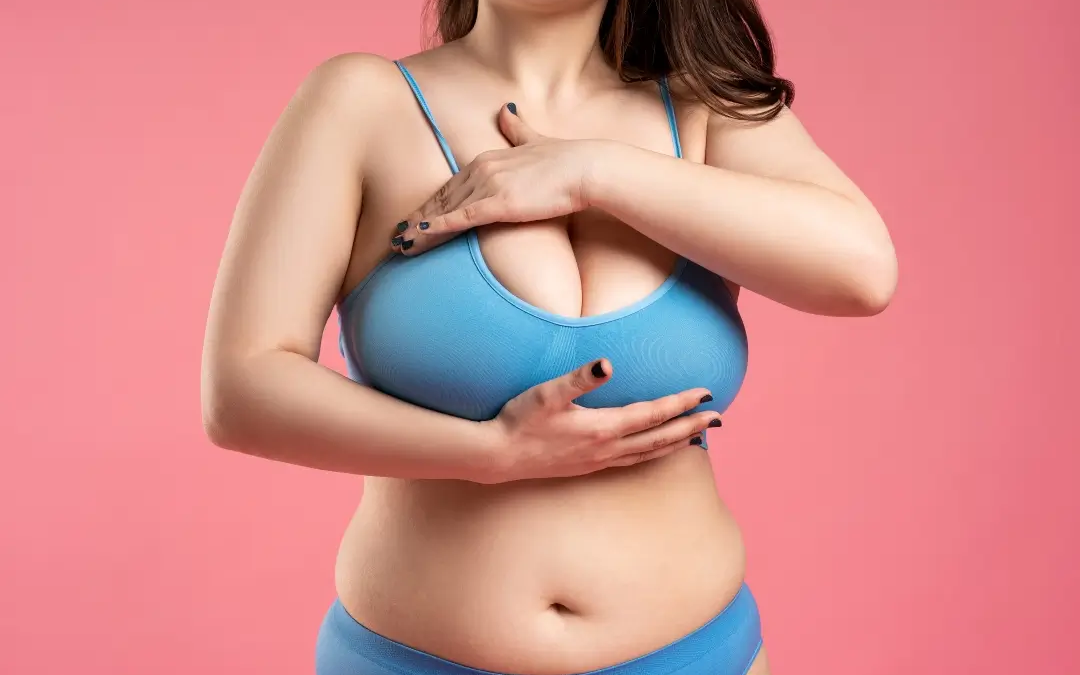Addressing Respiratory Discomfort: The Impact of Large Breasts on Breathing
Encountering breathing problems? Large breasts may bring you more challenges than physical insecurities and clothing frustrations. They can pose physiological issues like back pain, poor posture, and, most notably, the inability to breathe without strain.
At Dr. Cat Plastic Surgery, we know cosmetic procedures can be about so much more than your appearance. Some surgeries, like breast reduction, aim at alleviating breathing discomfort with the added benefit of enhancing your appearance, too.
In today’s article, we explore the link between breast weight and respiratory health, as well as potential solutions to breathe comfortably and radiate confidence.
Large Breasts and Breathing Problems: What’s the Connection?
The extra weight of larger breasts on your chest can cause you to work harder with each breath you draw. This is because of the heavy breast tissue (which is both glandular and fatty) weighing down your muscles and ribs and constricting how your diaphragm is supposed to move.
But not every woman with large breasts will struggle to breathe. This issue is more associated with a higher body mass index (BMI), which uses height and weight to determine your ideal body fat percentage.
The National Heart, Lung, and Blood Institute says that extra fatty tissue on your chest can release hormones (like insulin and cortisol) that negatively affect your respiratory function.
So, what kind of breathing problems do large breasts bring?
Breast Size-Related Respiratory Issues
While respiratory troubles aren’t the only physiological issue that comes with excessively large breasts, they’re definitely one of the most troublesome.
Some women experience these complications as they go about their day, noticing it’s harder to take deeper (or even normal) breaths. Others might find breathing is more strained when they sleep on their back or do something labor-intensive.
Here’s a closer look at some of the most common breathing problems that can arise
Shortness of breath
With extra weight on the chest, it compresses your lungs and makes it harder to take deep, full breaths.
Sleep apnea
Larger breasts can make it harder to breathe while sleeping, leading to obstructive sleep apnea (a condition characterized by pauses in breathing).
Poor posture and lung capacity
Heavier breasts can alter your posture, causing you to lean forward. This shift can affect lung expansion and capacity, making breathing less efficient.
Exacerbated asthma
For those with asthma, the additional pressure on the chest can worsen symptoms, making breathing even more laborious.
Decreased physical stamina
With reduced lung capacity, there’s less oxygen circulation, which leads to quicker fatigue and lower endurance when you partake in physical activities.
Heightened anxiety and stress
Breathing problems can trigger anxiety, which in turn can lead to a vicious cycle of more stress and further respiratory distress.
Not sure if it’s time to seek professional help? If every breath feels like a battle, that’s your sign that it may be time for a change.
The good news is that you have both surgical and non-surgical options to help you breathe more freely and feel amazing in your skin.
Let’s start with the most transformative option: breast reduction surgery.
Breast Reduction Surgery to Improve Breathing

Breast reduction surgery, or reduction mammoplasty, is a procedure that aims to remove excess breast tissue and redesign your breasts so they’re more proportionate to your height and weight.
Your surgeon achieves this by making an anchor-shaped incision around the areola, extending to the breast crease. They then use a cannula (or thin tube) to liposuction fat and excess breast tissue. At the same time, they meticulously resculpt your breast, artfully contouring the breast pocket that surrounds it.
Once they’re confident with the size, shape, and symmetry, your surgeon lifts the breasts to a more natural, aesthetically pleasing placement that complements their new appearance and projection.
The entire procedure, performed under general and local anesthesia, takes about three to four hours.
Given that no other surgeries are performed, you’ll recover fully in about four to six months.
Candidacy
At your medical consultation for breast surgery, your provider will assess your health, anatomy, medical history, concerns, and aesthetic goals. This helps them confirm whether breast reduction is the best answer to your respiratory issues.
You may be a candidate for breast reduction if you:
- Experience respiratory distress related to breast size
- Struggle with physical activity due to large breasts
- Are generally healthy with no serious medical conditions
- Don’t take medications that interact with anesthesia or post-op pain meds
- Are committed to following pre- and post-operative instructions
- Can stop smoking for a certain period before and after surgery
- Aren’t currently pregnant, breastfeeding, or planning to be soon
- Have realistic expectations of results, limitations, and potential risks
Benefits
In addition to breathing improvement, surgery brings other life-changing benefits. These include:
- Alleviated neck, back, and shoulder pain
- Elimination of bra strap indentations
- Reduced skin irritation
- Fewer headaches
- Increased comfort in physical activities
- Better posture
- Enhanced sleep quality
- Lower risk of breast sagging
- More clothing options
- More accurate breast health screenings
- Increased confidence
- Improved quality of life
<Insert: Snapshots of real-life patient experiences before and after breast reduction (anonymized)>
That said, it’s also important to weigh some potential downsides that could come with breast reduction surgery.
Considerations/Risks
If a patient fails to adhere to pre- and post-operative guidelines or surgery is performed incorrectly, it could open the door to a host of breast reduction complications, such as:
- Visible scarring
- Altered nipple sensation
- Risk of infection
- Anesthesia complications
- Allergic reactions
- Asymmetrical results
- Breastfeeding difficulties
- Blood clots or bleeding
- Poor or delayed healing
- Need for breast revision surgery
To reduce your risks, trust your transformation to a surgeon who specializes in breast reduction, like Dr. Cat Huang-Begovic, and follow their guidance every step of the way.
Not quite ready for surgery? That’s okay. There are other paths to explore.
Non-Surgical Breast Relief
Although non-surgical methods for alleviating breathing discomfort from large breasts might not offer the drastic and permanent results of surgery, they can still provide significant relief.
Here are a few less invasive options to consider:
- Physiotherapy for large breasts – A physiotherapist can design exercises to strengthen your back, neck, and shoulder muscles, reducing strain and improving respiratory function.
- Supportive clothing – Find well-fitted, supportive bras that distribute breast weight more evenly, reducing the load on your chest and improving your breathing.
- Weight management – Maintain a healthy weight to lessen the burden on your chest and improve your overall respiratory health.
- Posture exercises – While they won’t reduce the size of your breasts, posture correction exercises may help realign your body, easing the pressure on your lungs and making breathing easier.
Breathe Freely, Live Fully with Dr. Cat Plastic Surgery
If your large breasts cause breathing problems, impacting not just your confidence but your overall well-being, you have every reason to take action. After all, the better you breathe, the more your body thrives. This translates to more energy, mental clarity, and an all-around healthier, happier you.
Whether you choose the surgical route or opt for non-surgical methods, you can find a solution that works for you.
Ready to breathe easier and live better? Book your consultation with Dr. Cat and take the first step towards relief.

